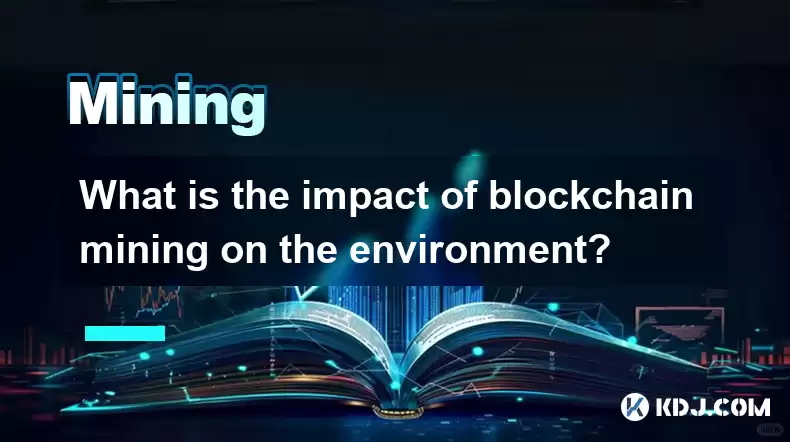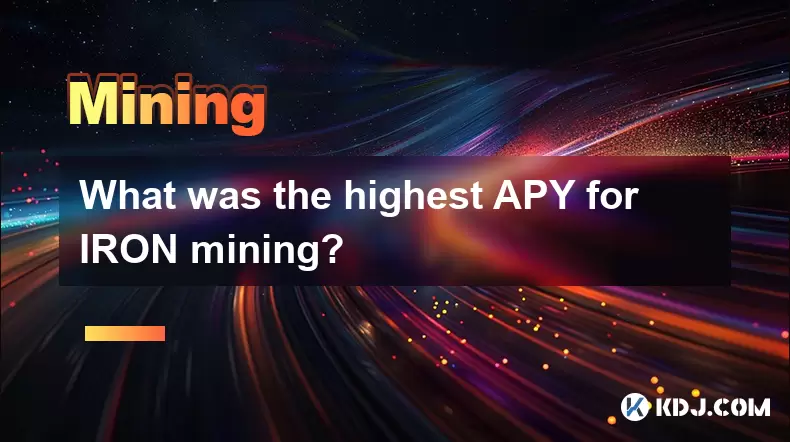-
 Bitcoin
Bitcoin $114100
-0.14% -
 Ethereum
Ethereum $3635
-0.73% -
 XRP
XRP $2.949
-2.85% -
 Tether USDt
Tether USDt $0.9999
-0.03% -
 BNB
BNB $760.3
-0.78% -
 Solana
Solana $163.8
-2.77% -
 USDC
USDC $0.9998
-0.04% -
 TRON
TRON $0.3323
-0.57% -
 Dogecoin
Dogecoin $0.2004
-2.99% -
 Cardano
Cardano $0.7245
-2.87% -
 Hyperliquid
Hyperliquid $37.52
-3.75% -
 Stellar
Stellar $0.3915
-3.58% -
 Sui
Sui $3.416
-2.20% -
 Bitcoin Cash
Bitcoin Cash $559.5
-0.84% -
 Chainlink
Chainlink $16.41
-2.16% -
 Hedera
Hedera $0.2406
-1.78% -
 Ethena USDe
Ethena USDe $1.001
0.00% -
 Avalanche
Avalanche $22.13
-1.98% -
 Litecoin
Litecoin $117.8
-4.32% -
 UNUS SED LEO
UNUS SED LEO $8.989
0.01% -
 Toncoin
Toncoin $3.183
-5.09% -
 Shiba Inu
Shiba Inu $0.00001214
-1.97% -
 Uniswap
Uniswap $9.654
-1.71% -
 Polkadot
Polkadot $3.616
-1.18% -
 Monero
Monero $291.6
-2.66% -
 Dai
Dai $0.9999
0.00% -
 Bitget Token
Bitget Token $4.310
-1.10% -
 Cronos
Cronos $0.1382
-1.93% -
 Pepe
Pepe $0.00001021
-3.40% -
 Aave
Aave $257.9
-1.42%
What is the impact of blockchain mining on the environment?
Proof-of-work crypto mining's high energy consumption, fueled by computationally intensive processes, leads to substantial greenhouse gas emissions and environmental damage, although efforts toward sustainable practices and alternative consensus mechanisms are underway.
Mar 24, 2025 at 10:00 pm

Key Points:
- Blockchain mining, particularly for Bitcoin and other proof-of-work cryptocurrencies, consumes significant energy.
- This energy consumption stems from the computational power needed to solve complex cryptographic puzzles.
- The environmental impact includes greenhouse gas emissions, contributing to climate change.
- The type of energy source used for mining significantly influences the environmental footprint.
- Efforts are underway to develop more sustainable mining practices and alternative consensus mechanisms.
What is the impact of blockchain mining on the environment?
The environmental impact of blockchain mining is a complex and hotly debated topic within the cryptocurrency community. The core issue lies in the energy-intensive nature of the process, particularly for cryptocurrencies utilizing the proof-of-work (PoW) consensus mechanism. Proof-of-work systems, like Bitcoin, require vast amounts of computational power to validate transactions and add new blocks to the blockchain. This process, often referred to as "mining," involves solving complex mathematical problems. The more powerful the hardware used, the higher the chance of success in solving these problems and earning cryptocurrency rewards.
The energy consumption associated with this computational power is substantial. Mining farms, often located in regions with cheap electricity, house thousands of specialized computers (ASICs) that run continuously, consuming significant amounts of electricity. This energy demand translates directly into a considerable carbon footprint, depending heavily on the source of the electricity.
The environmental consequences extend beyond mere energy consumption. The electricity generation process itself often relies on fossil fuels, leading to significant greenhouse gas emissions, primarily carbon dioxide. These emissions contribute directly to climate change and its associated environmental problems like rising sea levels, extreme weather events, and biodiversity loss. The sheer scale of energy used in Bitcoin mining, for example, has been compared to the energy consumption of entire countries.
The environmental impact is not uniform across all cryptocurrencies. Proof-of-stake (PoS) consensus mechanisms, employed by many altcoins, require significantly less energy than PoW. PoS systems validate transactions based on the amount of cryptocurrency a user "stakes," rather than computational power. This difference leads to a drastically reduced energy footprint. The shift towards PoS is considered a crucial step in mitigating the environmental concerns associated with blockchain technology.
However, even with PoS, the environmental impact isn't entirely eliminated. The manufacturing of the hardware required for staking, as well as the energy used to run the network, still contributes to the overall environmental footprint. The level of this contribution, however, is significantly lower compared to PoW systems.
The geographic location of mining operations also plays a role in the overall environmental impact. Mining farms situated in regions relying heavily on renewable energy sources, such as hydro or solar power, have a smaller carbon footprint compared to those powered by fossil fuels like coal or natural gas. The carbon intensity of electricity varies significantly across different regions globally.
Efforts are being made to mitigate the environmental impact of blockchain mining. These include a transition to more sustainable energy sources for mining operations, the development and adoption of more energy-efficient hardware, and the exploration and implementation of alternative consensus mechanisms. There is also a growing focus on carbon offsetting programs, where mining operations invest in projects that reduce greenhouse gas emissions elsewhere to compensate for their own environmental footprint. This is a controversial area, however, with debates around the effectiveness and transparency of such programs.
The development of more environmentally friendly cryptocurrencies and mining practices is crucial for the long-term sustainability of the blockchain industry. The future of blockchain technology depends on its ability to address these environmental concerns effectively and transparently. Failure to do so risks undermining public trust and hindering its widespread adoption.
Frequently Asked Questions:
Q: How much energy does Bitcoin mining consume? A: The exact energy consumption of Bitcoin mining fluctuates and is difficult to precisely quantify, but estimates frequently place it in the range of several gigawatts, comparable to the energy consumption of small countries. This varies based on the Bitcoin price, the difficulty of mining, and the energy efficiency of mining hardware.
Q: What are the main greenhouse gas emissions from cryptocurrency mining? A: The primary greenhouse gas emission is carbon dioxide (CO2), stemming from the burning of fossil fuels used to generate electricity for mining operations. Other greenhouse gases might be released depending on the specific energy source used.
Q: Are all cryptocurrencies equally damaging to the environment? A: No. Proof-of-work cryptocurrencies like Bitcoin have a significantly larger environmental impact compared to proof-of-stake cryptocurrencies. PoS systems generally consume far less energy.
Q: What are some solutions to reduce the environmental impact of cryptocurrency mining? A: Solutions include transitioning to renewable energy sources for mining operations, developing more energy-efficient mining hardware, adopting more energy-efficient consensus mechanisms like PoS, and investing in carbon offsetting projects.
Q: Is it possible for cryptocurrency mining to be environmentally sustainable? A: While completely eliminating the environmental impact is challenging, significant progress can be made through a combination of the solutions mentioned above. The feasibility of truly sustainable mining depends on technological advancements and widespread adoption of environmentally conscious practices.
Disclaimer:info@kdj.com
The information provided is not trading advice. kdj.com does not assume any responsibility for any investments made based on the information provided in this article. Cryptocurrencies are highly volatile and it is highly recommended that you invest with caution after thorough research!
If you believe that the content used on this website infringes your copyright, please contact us immediately (info@kdj.com) and we will delete it promptly.
- Acapulco Crafts in Crisis: Sales Plummet, Artisans Struggle
- 2025-08-06 14:30:12
- SEC, Crypto & Bitwise CIO: A New Dawn?
- 2025-08-06 14:35:11
- Coinbase, Financing, and the Crypto Market: Navigating Choppy Waters in NYC Style
- 2025-08-06 12:50:11
- Bitcoin in Indonesia: Crypto Education and Economic Strategy
- 2025-08-06 12:50:11
- DeriW Mainnet: Zero Gas Fees Revolutionize On-Chain Derivatives Trading
- 2025-08-06 10:30:11
- IOTA, Cloud Mining, and Eco-Friendly Crypto: A New York Investor's Take
- 2025-08-06 10:30:11
Related knowledge

What was the highest APY for IRON mining?
Jul 23,2025 at 05:14am
Understanding IRON Token and Its Mining MechanismThe IRON token is a stablecoin that operates within the Iron Finance ecosystem, primarily on blockcha...

What is impermanent loss in IRON pools?
Jul 23,2025 at 09:00am
Understanding Impermanent Loss in the Context of IRON PoolsImpermanent loss is a phenomenon that affects liquidity providers in decentralized finance ...

How to claim rewards from IRON mining?
Jul 23,2025 at 02:21pm
Understanding IRON Mining and Reward MechanismsIRON Finance operated as a decentralized finance (DeFi) protocol on the Polygon and Binance Smart Chain...

How to claim rewards from IRON mining?
Jul 29,2025 at 05:07am
Understanding IRON Mining and Reward MechanismIRON is a dual-token system designed to stabilize the value of a synthetic asset through a combination o...

IRON mining tutorial for beginners
Jul 27,2025 at 12:01am
What Is IRON and How Does It Work in the Cryptocurrency Ecosystem?IRON is a cryptocurrency token that operates on the Binance Smart Chain (BSC) and is...

How to calculate APY for IRON mining?
Jul 28,2025 at 09:49am
Understanding APY in the Context of IRON Token MiningWhen engaging in IRON token mining within decentralized finance (DeFi) platforms, Annual Percenta...

What was the highest APY for IRON mining?
Jul 23,2025 at 05:14am
Understanding IRON Token and Its Mining MechanismThe IRON token is a stablecoin that operates within the Iron Finance ecosystem, primarily on blockcha...

What is impermanent loss in IRON pools?
Jul 23,2025 at 09:00am
Understanding Impermanent Loss in the Context of IRON PoolsImpermanent loss is a phenomenon that affects liquidity providers in decentralized finance ...

How to claim rewards from IRON mining?
Jul 23,2025 at 02:21pm
Understanding IRON Mining and Reward MechanismsIRON Finance operated as a decentralized finance (DeFi) protocol on the Polygon and Binance Smart Chain...

How to claim rewards from IRON mining?
Jul 29,2025 at 05:07am
Understanding IRON Mining and Reward MechanismIRON is a dual-token system designed to stabilize the value of a synthetic asset through a combination o...

IRON mining tutorial for beginners
Jul 27,2025 at 12:01am
What Is IRON and How Does It Work in the Cryptocurrency Ecosystem?IRON is a cryptocurrency token that operates on the Binance Smart Chain (BSC) and is...

How to calculate APY for IRON mining?
Jul 28,2025 at 09:49am
Understanding APY in the Context of IRON Token MiningWhen engaging in IRON token mining within decentralized finance (DeFi) platforms, Annual Percenta...
See all articles

























































































